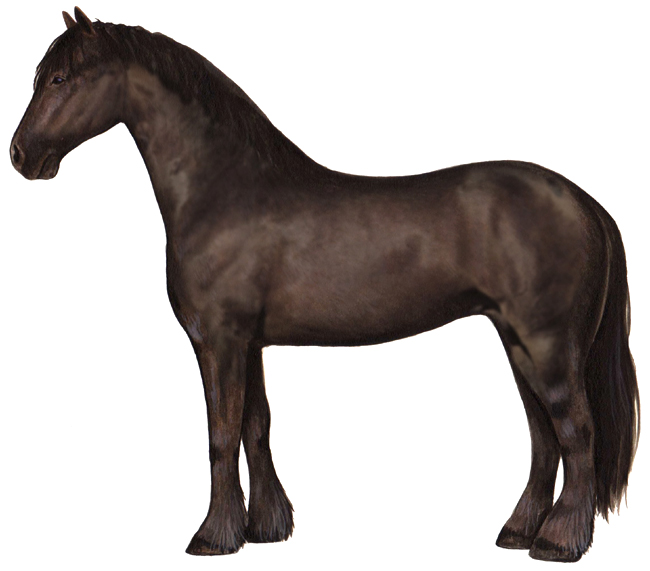|
\ |
| Friesian Horse |
|
 |
|
The Friesian
Horse originated in Friesland, one of twelve provinces of the
Kingdom of the Netherlands (Holland), situated in the northwest of
Europe. Friesland is an old country dating to 500 B.C., when the
Friesians settled along the cost of the North Sea. They were
tradesmen, seafarers, farmers and horse breeders.
The Friesian horse descends from the Equus robustus.
During the 16th and 17th centuries, but probably also earlier,
Arabian blood was introduced, especially through Andalusian horses
from Spain. This has given them the high knee-action, the small head
and the craning neck. Because of his temperament the Friesian horse
is considered warm blooded. The Friesian horse has been kept free
from influence of the English Thoroughbred. During the last two
centuries it has been bred pure. Breeding horses and dealing in them
was very important for the Friesians. The monks in the many
monasteries in Friesland before the reformation did a lot of horse
breeding. Through the centuries the Friesian Government has made
many regulations in order to safeguard good breeding. Now the Dutch
Horselaw of 1939 (modified) gives rules for studbook and breeding.
From records of the past we know that the Friesian horse of
old was famous. There is information from as early as 1251 and there
are books in which Friesian horses were mentioned and praised from
as early as the 16th century.
Armored knights of old found this horse very desirable,
having the strength to carry great weight into battle and still
maneuver quickly. Later, its suppleness and agility made the breed
much sought after for use in riding schools in Paris and Spain
during the 15th and 16th centuries. Before an
elegant carriage this breed has few rivals, and throughout Europe
the royal courts used them as coach horses.
As early as 1625 Friesian horses were
being imported into what later would become the United States of
America. The Dutch founded New Amsterdam in the region they
discovered in 1609, but they had to abandon it to the English in
1664, when the name was changed to New York. Advertisements in the
papers offer trotters of "Dutch" descent. These must have been
Friesian horses. The able writer Jeanne Mellin proposes in her books
The Morgan Horse (1961) and The Morgan Horse Handbook
(1973) the possibility that this well-known American horse is of
Friesian descent. The ability to trot fast, the heavy manes, the
long rich tail and the fetlocks at the feet of the original
forefather of this breed may be an indication.
The breed was totally lost in North
America due to crossbreeding. Tom Hannon of Canton
reintroduced the horse to North America in 1974. |
Image copyright Feenixx Publishing.
All right reserved. May not be used without prior written consent. |
|